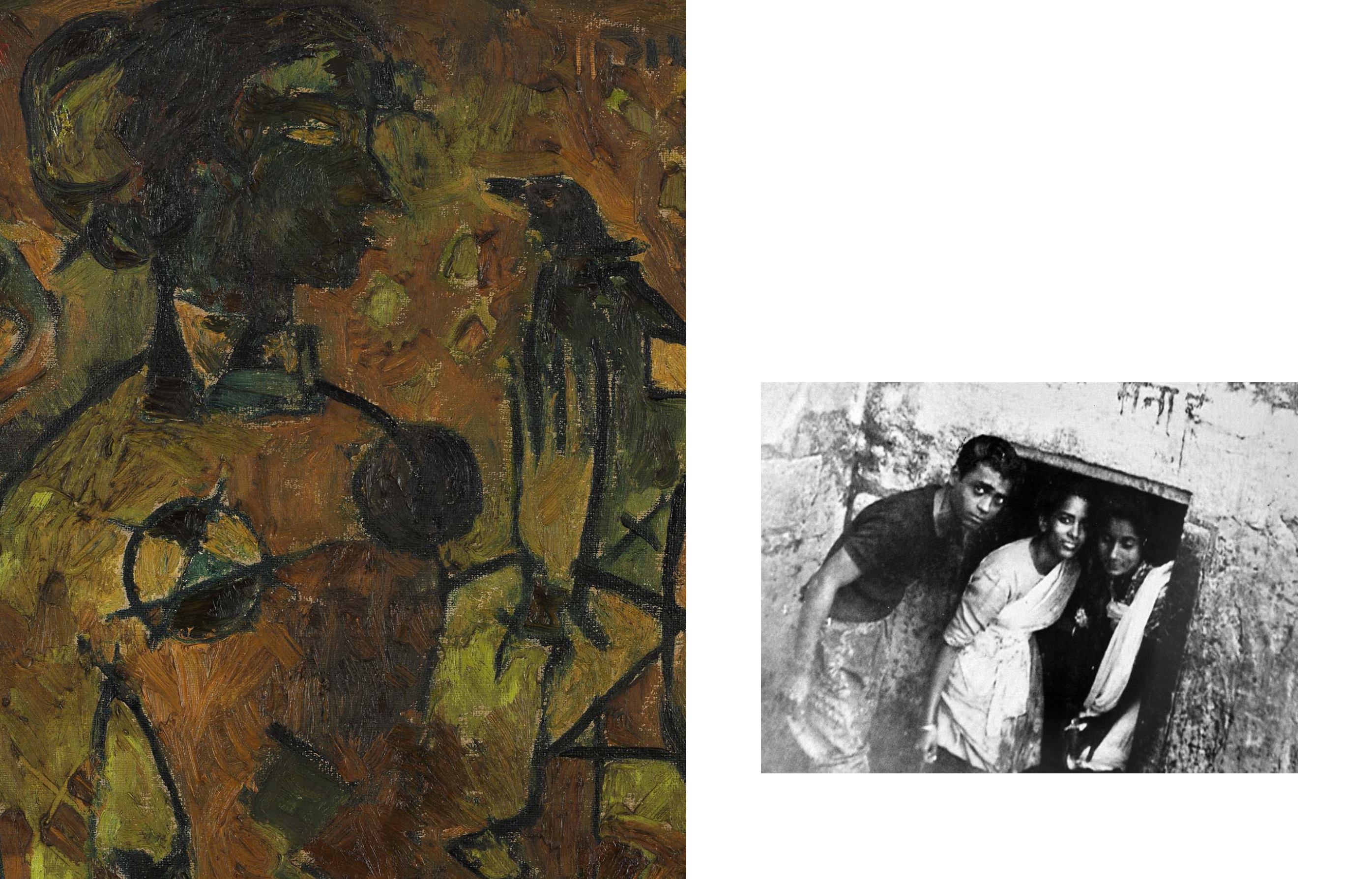

22
23
Painted in 1952, this portrait offers a peek into the early stages
of V S Gaitonde’s career. The artist, who would later achieve
fame as one of India’s foremost abstractionists, was at this
time a recent graduate of the J J School of Art, and a teacher
at the same institute for a brief period in 1951. A figurative
work painted with a dark, earthy palette, the composition is
informed by a study of Indian artistic traditions.
There was an implicit influence of Indian miniature painting
evidenced in the way Gaitonde illustrated his early figures
in a two‒dimensional, almost Cubist style, without much
shading, contoured by heavy black outlines and geometric
shapes, as seen in the present lot. According to art critic
Sandhini Poddar, this kind of articulation had its precursor
in Jain painting of the 11
th
– 15
th
century, where artists
rendered human figures in “three‒quarter profiles with fish‒
shaped eyes, angular postures and narrow waists.” (Sandhini
Poddar,
V S Gaitonde: Painting as Process, Painting as Life
,
New York: The Solomon R Guggenheim Museum, 2014,
p. 20)
The subject of this painting, Bhanu Athaiya, née Rajopadhye,
was a student of Gaitonde at the J J School of Art during
his time as a teacher there, and the only woman to be part
of the Progressive Artists’ Group in Bombay. Athaiya is an
Academy Award winning costume designer in the field of
Hindi cinema. After graduating from the art school, she
began her career as a fashion illustrator for various women’s
magazines during the 1950s, and eventually went on to
design costumes for well‒known filmmakers such as Guru
Gaitonde (left) with Bhanu Rajopadhye Athaiya (right) at a study tour of Sir J J School of Art to Udaipur, during his fellowship period, in the academic year of 1950‒51.
Image courtesy: Sukhashil Narayan Chavan
Reproduced from
Vasudeo Santu Gaitonde: Sonata of Solitude
, Mumbai: Bodhana Arts and Research Foundation and New Delhi: The Raza Foundation, 2016, p. 67
“Early on, I did both figurative and non‒figurative paintings;
I was initially influenced by Indian miniatures.”
V S GAITONDE


















